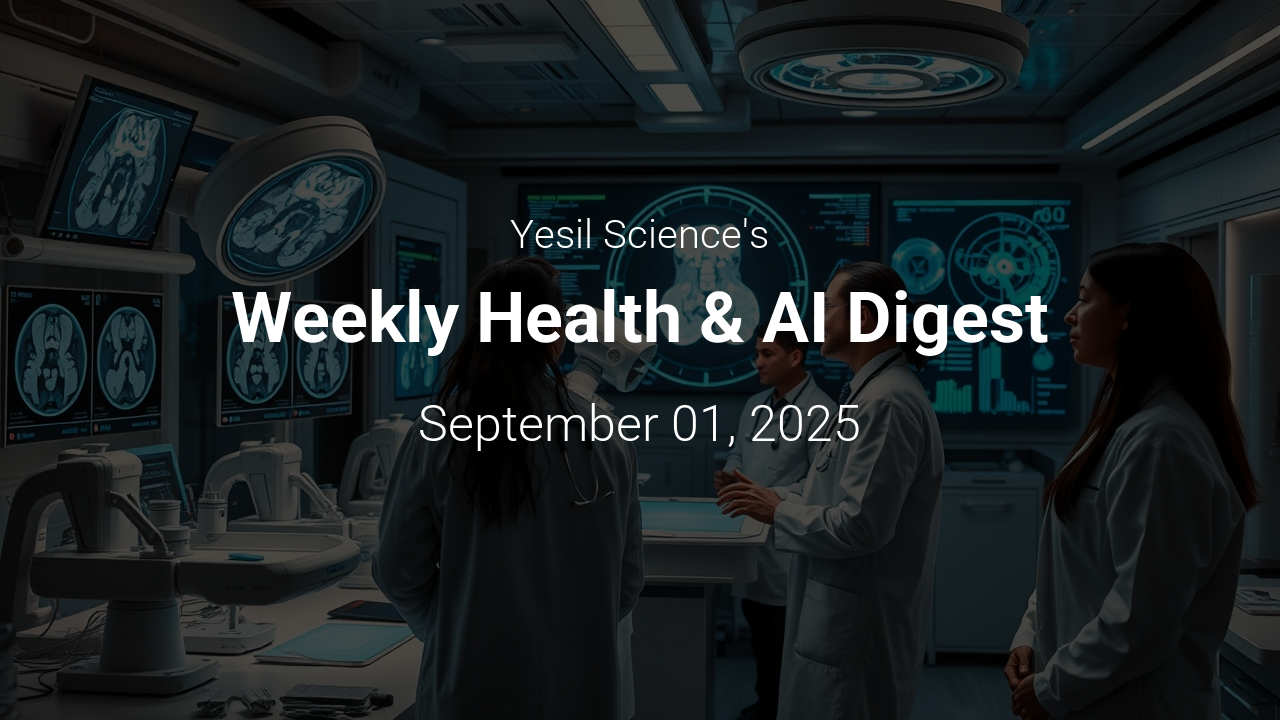Here are the latest breakthroughs in health & AI (September 01, 2025 week)
🔹 Automated Mucormycosis Diagnosis from Paranasal CT Using ResNet50 and ConvNeXt Small.
Automated mucormycosis diagnosis via CT scans shows 100% accuracy with ConvNeXt Small model. 🤖🦠
——-
KAFR enhances surgical video analysis, achieving 10x frame reduction and 4.32% accuracy boost. 🤖📊
——-
“3D Reconstruction in Thoracic Surgery: Enhancing Precision & Outcomes 📊🔍”
——-
Exploring AI’s role in medical education: critical insights from Chinese physicians. 🤖📚 Ethical implications and applications analyzed.
——-
Exploring chatbot interactions: 1,553 users reveal emotional support’s impact on media dependence and usage intention. 🤖💬
——-
Deep learning reveals key factors in porous architecture affecting reactive transport in catalysis. 📊🔍 Significant findings from PubMed article.
——-
🔹 Population health management of human phenotype ontology.
Population health management integrates Human Phenotype Ontology for improved health outcomes. Key findings on AI, genomics, and ethical stewardship. 📊🌍
——-
Voice-controlled MRI scanners show 93.3% task completion in real-time interventions, enhancing efficiency and communication. 🗣️🖥️
——-
🔹 Systematic benchmarking of 13 AI methods for predicting cyclic peptide membrane permeability.
Benchmarking 13 AI methods for cyclic peptide permeability reveals DMPNN’s superior performance. Key insights on molecular representation and model architecture. 📊🔬
——-
🔹 High-Precision Contactless Stereo Acoustic Monitoring in Polysomnographic Studies of Children.
High-Precision Acoustic Monitoring in Pediatric Sleep Studies: 91.16% Accuracy with Deep Learning 🎧📊
——-
Urolithiasis online materials are complex; 20% of patients struggle with comprehension. Simplification is crucial for better adherence. 📉💧
——-
Exploring AI’s role in pediatric healthcare: potential benefits, clinical applications, and ethical challenges. 🤖👶📊
——-
Exploring biomarkers in high-risk prostate cancer: 50-75% relapse rate post-treatment. Genomic profiling enhances precision oncology. 📊🔬
——-
AI model predicts allo-HSCT survival with 93.26% accuracy using 7 key factors. Study includes 564 patients. 📊🩸
——-
AI surpasses urologists in prostate cancer detection on micro-ultrasonography: 73% vs 58% sensitivity. 📊🤖
——-
AI in Palliative Care: 125 studies reveal gaps in validation, transparency, and ethical frameworks. Future research is crucial! 🤖💔
——-
AI quantifies bronchiectasis in COPD patients, linking scores to mortality and exacerbation risks. 📊💔
——-
🔹 Early embryo development: the current perspective in molecular evaluation and clinical status.
Exploring embryo development: molecular insights, AI advancements, and clinical challenges in ART. 🧬🤖
——-
🔹 Empowering the next generation: integrating artificial intelligence education into medical training.
Integrating AI in medical training enhances skills for future doctors. Key insights from Tan et al. (2025) reveal transformative potential. 🤖📚
——-
Actigraphy data reveals AI’s potential in detecting depression: 0.679-0.833 AUROC accuracy across demographics. 📊🧠
——-
That’s a wrap for this week’s digest! Stay tuned for more health & AI updates. 🚀💡
#HealthAI #TechNews
